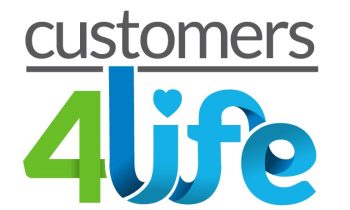
Have you ever wondered, “What’s in a name?” Clearly, it’s a top business priority as organizations spend millions of dollars and countless hours on perfecting their brand, but how important is the branding of an internal program?
In going through this process at my company a few years ago, I found that an internal brand is a capstone to developing a CX program. It pulls all of the operational elements of the program and the emotional essence of the customer journey together into one central identity that serves as the rallying cry for employees and elicits ownership throughout the organization. Short of establishing executive sponsorship, branding is the most important step in developing a CX program for these reasons.

We all know that brand building doesn’t happen overnight. It takes a lot of time and creative and analytical thinkers to find just the right words and images that will both capture the mission of the program and resonate with your stakeholders. Following are some lessons we learned when branding our CX program, Customers for Life or C4L.
Don’t Brand Just to Brand
Believe it or not, it is possible to develop a brand too early. If you haven’t defined the CX program’s purpose and taken the time to develop all of the components that comprise the program, then your efforts could fall flat. The best brand reflects the qualities and essence of a program so developing it prematurely can result in dissonance as the program matures.
For example, my company’s CX program is based on three principles: 1) driving a consistent experience for our customers across departments and regions; 2) providing a deeper understanding by talking with our customers to learn about their changing needs, gathering feedback, and sharing it within the organization; and 3) engaging with and empowering our employees to reinforce alignment with the customer experience. Those three principles are the pillars that support and activate the Customers for Life brand. But these pillars were developed over time and, if we’d branded earlier in the process, we would not have had the substance to back up the brand.
Building Aspiration and Meaning into the Brand
I work for a large, global company so our CX brand needed to have a lasting, resilient life span and get stronger as the program grows. It was important that the messaging and graphics carry meaning to our internal and external audiences and that they will endure through various stages of growth.
In developing our logo, the creative team made a concerted effort to remain within our corporate branding guidelines for fonts, color treatment, and tone. We wanted to focus on triggering positive reactions through the graphics used to illustrate the “C4L” logo. A heart is a component of the logo to represent that our customers are at the center of everything we do and recognize that emotion is part of the customer journey. A ribbon also runs through the graphic to represent the milestones and operational steps in the customer journey. The ultimate goal was to incorporate elements that work together and provide a simple and recognizable representation of the program.
One Brand Does Not Fit All
Building brand success in one area of the organization won’t always translate well to other areas. When we came up with C4L, it was a big hit across the organization. So much so, other departments wanted to adopt it for their programs.
For example, some colleagues in our partner experience program thought Partners for Life would be a good fit. However, they had just established a new partner experience team and were in the early stages of creating the program where the messaging, goals, and other components hadn’t been fully developed. I had to ask, “Are you ready to broadcast a successful program if you are still in the early stages? I don’t think so!” It’s important to test your brand readiness from all angles–creatively as well as logically and literally.
Launching and Supporting the Brand
The hard work doesn’t end once the name and logo are created. After all the fanfare, it’s imperative that there’s a plan in place to support the meaning and the messaging behind the brand. In our case, the C4L brand developed organically. Since our organization has always enjoyed a high retention rate, it seemed that continuing that focus by using Customers for Life as our brand made sense.
Where I made a tactical error was in assuming that, since our customer experience program had been in existence for over 5 years, that everyone could describe what it was. The name, Customers for Life, was so catchy – too catchy, perhaps! It caught on with others who started referencing it, adding it to presentations – and it took off like a rocket. The sales team ran with C4L and began to use it as a differentiator with customers and prospects. While it wasn’t a problem that they were using it as a differentiator, it was an issue that each employee was describing the program differently.
While we were happy that the sales team used the branding to talk about the program, they were also developing their own stories about what it was, why we were investing in customer experience, etc. We had to quickly develop and circulate a sales enablement kit with talking points, slide decks, and deliver lunch-and-learn training sessions with our CX pros, sales team, and executive sponsors to further define the brand and the program so there would be consistency in the message. All in all, our sales team soon became C4L ambassadors—a factor that continues to drive momentum and success around the program.
Nurturing the Brand
Your CX branding isn’t one and done–it will evolve and grow over time with the right nurturing. Continuing to enable customer support, sales teams, and executives as the program evolves will drive momentum and continue to grow the brand exponentially. Providing the proper training and resources and updating the messaging with new customer success stories, engagement opportunities and improvements to the customer experience will help drive awareness of the program and build enduring customer relationships.
Capture and Celebrate CX Successes
The final tip is to make sure to capture and celebrate your CX successes and include them in your branding story. Many aspects of customer satisfaction measurement focus on what is going wrong and the improvement that has happened for those flawed processes are included in our updates.
But don’t stop there. Bring the stories about what your organization is doing well into the branding. For example, our customers tell us that our employees are not only experts in the industry but are focused on making customers successful. So, as part of the internal C4L branding, we recognize the team members for those extraordinary efforts.
Establishing strong and resilient relationships with your customers creates loyalty and trust, but this is only the beginning. Building a brand for your customer experience program reflects the strategic goals and the emotional essence. It also unites your internal audiences as they are working towards a common goal of customer loyalty – and customers for life.



